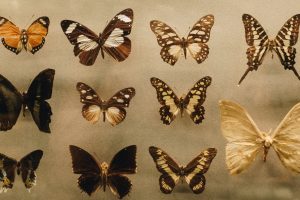FutureProofing Natural History Collections: Creating Sustainable Models for Research Resources
In December 2016, The Ecological Society of America (ESA), the American Alliance of Museums, and the Yale Peabody Museum of Natural History, co-organized a three-day workshop to explore “FutureProofing” museum collections.
Why do these collections need “FutureProofing”?
In the face of increased competition and shifting consumer interests, institutions like natural history museums and collections, must adapt in order to sustain themselves. Society has trended away from traditional methods of cultural consumption, the competition for philanthropic funding is ever growing, and the emergence of Benefit Corporations threatens to undermine museums and nonprofits alike. The mass extinction of museums and collections can be avoided; there’s still time to adapt to this new environment, there’s still time to FutureProof.
[perfectpullquote align=”full” bordertop=”false” cite=”” link=”” color=”” class=”” size=”16″]Benefit Corporation: a for-profit corporation that is legally obligated to deliver a return on both financial investments and on a self-declared mission that delivers a public good (Merritt 2017). These corporations break down the perception that addressing social needs requires charitable support. While threatening the typical museum business model, this new bridge between business and social impact also provides opportunity.[/perfectpullquote]
How did this training help?
The FutureProofing workshop held in New Haven, CT encouraged participants to discuss new methods to measure a collection’s value and to think about creative ways to translate this value into support. They learned about companies, museums, and collections, adapting new business models in order to maintain value and secure new sources of funding, and learned of the shortcomings from those who failed to adapt. The participants were challenged to brainstorm creative new business ventures based on fictional case studies with realistic challenges. The processes they used to develop these fictional solutions could be replicated and applied to their real institutions.
Participants came from a range of collection-holding institutions and represented a variety of different roles: directors, administrators, curators, education and exhibit specialists, and collection managers. The representation of so many different professionals is encouraging, collaboration across all levels of leadership is important when attempting to implement big new ideas.
Resources
WEBINAR: FutureProofing Natural History Collections: Creating Sustainable Financial Models for Research Resources. Wednesday, January 22, 2020 2-3 pm ET
View the recording here.
Merritt, Elizabeth. “FutureProofing Museum Business Plans: Creating Sustainable Models for Natural History Research Collections.” Museum, 2017, aam-us.org.
Norris, Chris. “FutureProofing Natural History Collections: Creating Sustainable Models for Research Resources. A Report on a Workshop Held at the Yale Peabody Museum, December 13-15, 2016.” SPNHC Connection, Mar. 2017, spnhc.org.
For more resources on FutureProofing visit our Resources Page!



